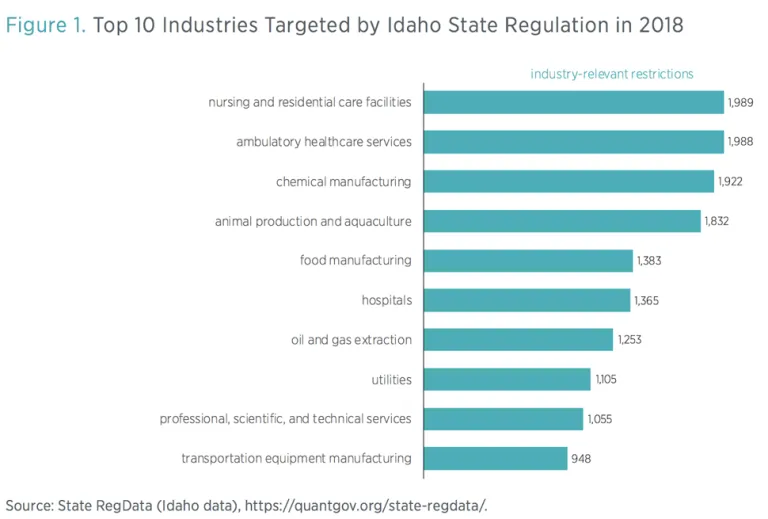- | Expert Commentary Expert Commentary
- |
Regulatory Reform, CON Laws, and FinTech
Research Round-Up: September 24, 2018
Look North for Regulatory Reform Examples
President Trump’s Executive Order 13771 has an ambitious goal: eliminating two regulations for every new regulation added. Such regulatory reform efforts have proven notoriously difficult, but not impossible; the Canadian province of British Columbia has achieved impressive results since 2001, reducing rules by 48 percent over 16 years. James Broughel and Laura Jones just released a new study that concludes that the United States would benefit from adopting British Columbia’s model.
Right now, Trump’s two-for-one rule faces a number of obstacles that limit its effectiveness. Vast numbers of new rules are exempt from the order, the metric for “ins” and “outs” is complex and confusing, and no one administrator oversees government-wide regulatory reform. Broughel and Jones identify fixes in each of these areas, basing their suggestions on the empirical success in British Columbia.
To read their full study, click here.
The Promise and Challenges of FinTech
On Tuesday, Mercatus scholar Brian Knight testified before the Senate Committee on Banking, Housing, and Urban Affairs about the role of financial technology (or “fintech”) in the economy, and how policymakers should treat this emerging technology. He made three fundamental points:
1. Fintech has the potential to provide customers with cheaper, faster, and fairer financial services.
2. While fintech has potential risks, so do status quo financial services. Policymakers should judge fintech against these risks, not against a standard of perfection.
3. Existing laws can mitigate these risks, and lawmakers should wait to see if current law adequately addresses potential concerns before adding additional layers of rules.
To read Knight’s full written testimony, click here.
Certificate-Of-Need Laws Harm Georgian Patients
On Wednesday, Mercatus senior fellow Thomas Stratmann testified before the Georgia House of Representatives Rural Development Council on the effect of Certificate-Of-Need (CON) laws. CON laws require healthcare providers to prove that new services are needed before they expand their practice or obtain new medical technologies. In Georgia, regulators must approve any new healthcare products and services including hospitals, hospital beds, MRI machines, CT scanners, PET scanners, or ambulatory surgery centers.
While well-intentioned, these laws decrease the availability of healthcare to those who need it. Stratmann presents numerous peer-reviewed studies that have concluded that CON laws fail to achieve any of their aims. Stratmann urges Georgia to join the 15 other states without these restrictions.
To read the written testimony, click here.
A Snapshot of Idaho Regulation
James Broughel continues his series on state regulation with an in-depth analysis of Idaho rules. The Idaho Administrative Code (IAC) contains 61,848 restrictions and 5.0 million words—almost seven weeks’ worth of reading. Here are the industries that are most affected:

While most of the national conversation about regulation focuses on federal rules, state rules compose an important part of the administrative landscape. To read Broughel’s full report, click here.